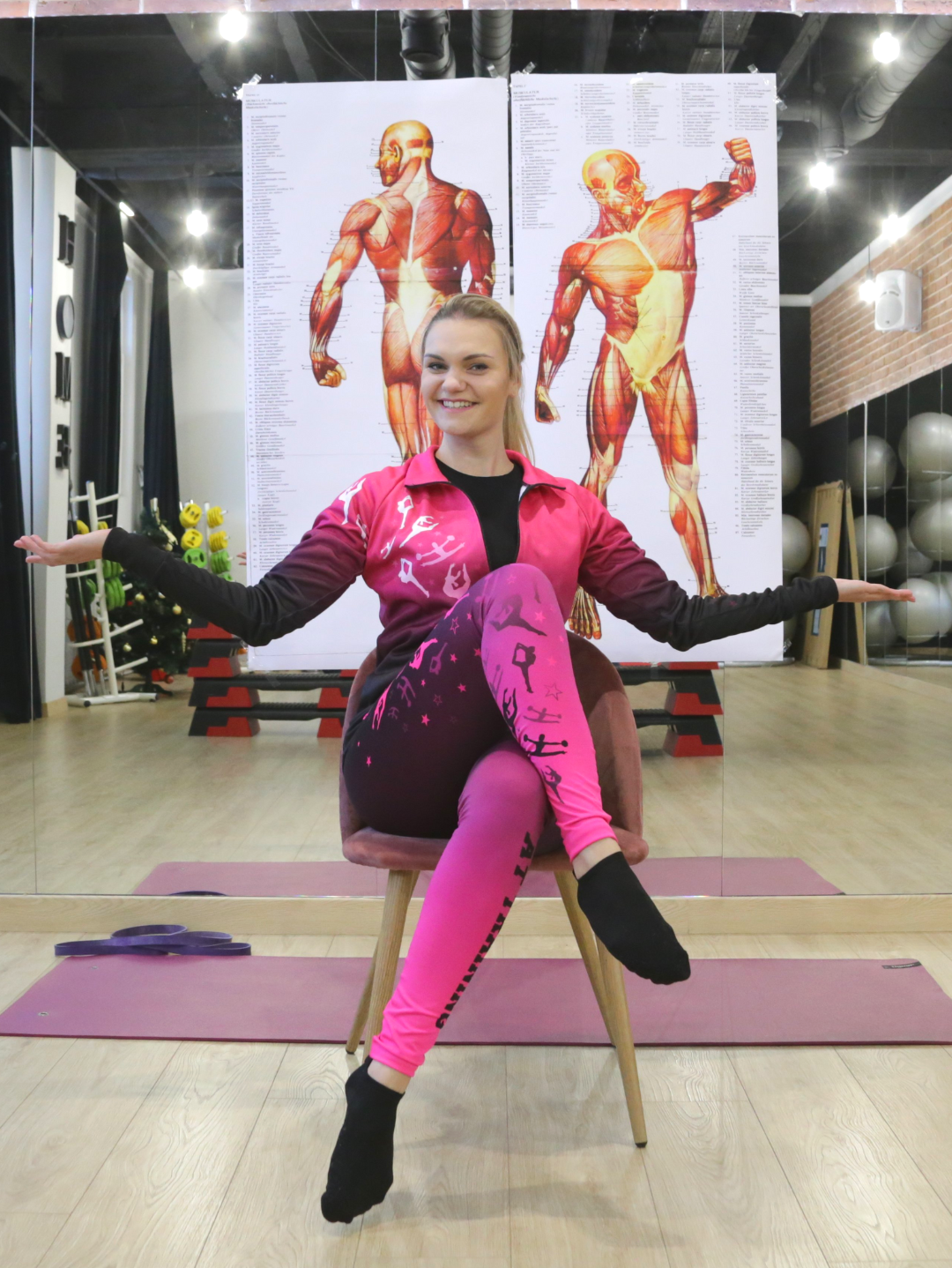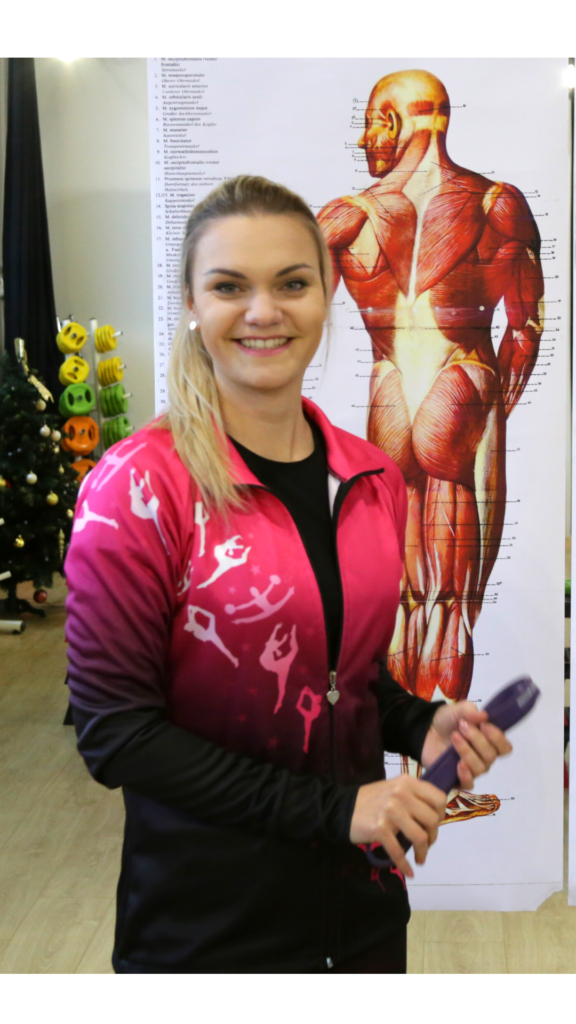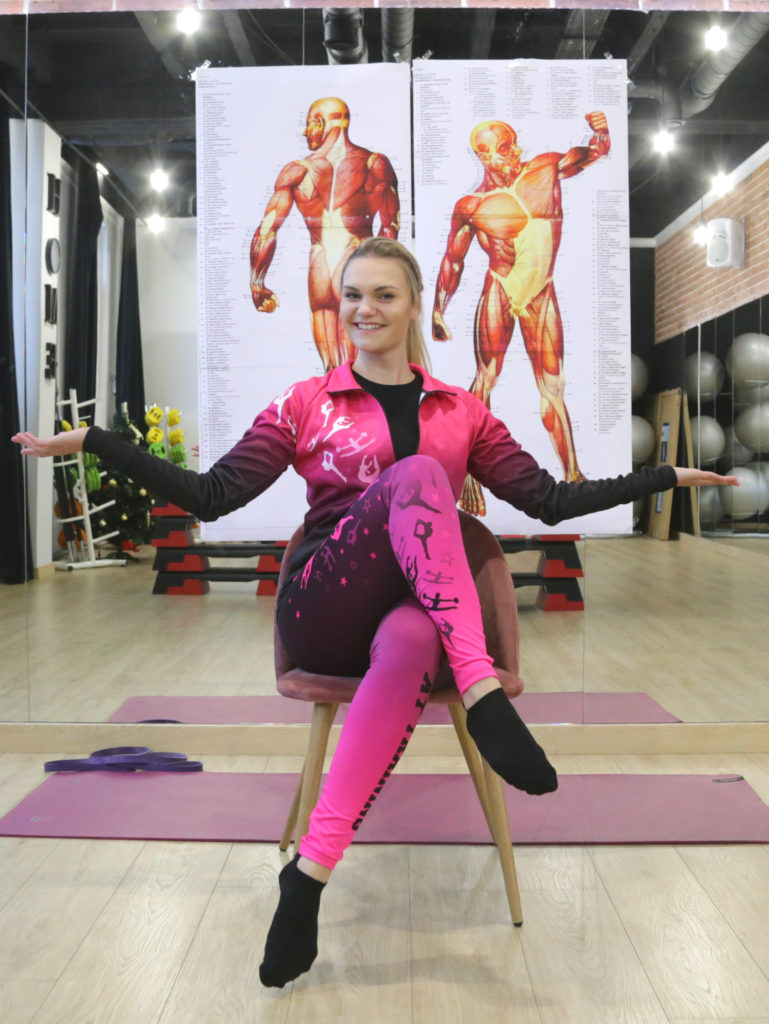[English below]
Dobre rozciągnięcie jest potrzebne do prawidłowego wykonania wielu elementów technicznych w cheerleadingu, a także jest niezbędne w całym toku treningowym. Dobry poziom rozciągnięcia jest efektem pracy, predyspozycji zawodnika, a także sporej wiedzy, jak bezpiecznie i skutecznie zwiększać zakres naszego ciała. Poniżej opisujemy też, dlaczego rozciąganie w cheerleadingu jest tak ważne.

Dlatego też, dostarczając Wam zawsze najlepszą wiedzę, postanowiliśmy napisać ten tekst we współpracy z Anną Kamińską- fizjoterapeutką, byłą zawodniczką aerobicu sportowego oraz byłą cheerleaders.
Podstawy rozciągania dla cheerleaders
Zacznijmy od tego, czym w zasadzie jest streching/rozciąganie? Jest to uelastycznienie ciała w obrębie stawów i mięśni, a także zabezpieczenie go przed kontuzjami. Badania donoszą, że rozciąganie mięśni po treningi niweluje ryzyko kontuzji aż do 75%. Co więcej, regularne rozciąganie zmniejsza ciągłe napięcie psychosomatyczne, czyli daje pewną przerwę od “nerwów” naszemu ciału oraz umysłowi. Pamiętajmy też, że w momencie, kiedy zawodnik będzie miał w swoim prywatnym życiu, trochę bardziej stresujący czas, to może być mu o wiele trudniej się rozciągnąć, a nawet jego zakresy mogą się zmniejszyć.
Zastosowanie strechingu w cheer treningu
Ćwiczenia elastyczności ciała znane są od wieków, natomiast pierwsze publikacje dotyczące pozytywnego wpływu stretchingu pojawiły się z końcem XX wieku. Na podstawowym etapie, warto wiedzieć, że jest wiele rodzajów i metod rozciągania. Najbardziej przydatnymi w cheerleadingu są: streching statyczny, dynamiczny i poizometryczna relaksacja mięśniowa.
Streching dynamiczny polega na dynamicznym (jednak nie nerwowym, poza zakresy) oddalaniu od siebie przyczepów mięśni- czyli na rozciąganiu i zwalnianiu rozciągnięcia. To rozciąganie powinno być elementem rozgrzewki, jednak tutaj uwaga- to rozciąganie również wymaga rozgrzewki! Nie można nierozgrzanego ciała poddać rozciąganiu dynamicznemu. Pamiętajmy także, że szybkie podniesienie tętna i przyspieszenie oddechu nie świadczy o tym, że jesteśmy rozgrzani.
Streching statyczny jest świetną formą na zwiększenie zakresu mięśni i stawów w sposób spokojny, gdzie pozycje przytrzymywane są dłużej i nie wykonujemy dynamicznych ruchów.
Najczęściej, jeśli mówimy o rozciągnięciu w cheerleadingu, na myśl przychodzą nam elementy, w których to rozciągnięcie przekracza zakresy człowieka. W grupach początkujących, zwróćmy uwagę czy np. nie musimy rozciągnąć mięśni, które są przykurczone i powodują niemożność utrzymania prawidłowej postawy ciała. Często musimy także sprawdzić, czy nasi zawodnicy są w stanie wyprostować stawy łokciowe, aby uzyskać prawidłową technikę arm motion. Dopiero później możemy pomyśleć o rozciąganiu mającym doprowadzić nas do trudnych elementów.
W cheerleadingu rozciągnięcia potrzebujemy nie tylko w elementach statycznych, które pokazują to rozciągnięcie, ale także do elementów dynamicznych. Są nimi np: skok szpagatowy czy hurdler. Mamy świadomość tego, że każdy chce szybką receptę na rozciągnięcie. Tutaj niestety jej nie ma, jednak na szkoleniach omawiamy dokładnie jakie mięśnie należy rozciągnąć do danego elementu.
Szkolenie ze skoczności i elementów tańca klasycznego w cheerleadingu
Czy rozciąganie w cheerleadingu musi boleć?
Często, kiedy myślimy o rozciąganiu, to w głowie pojawia nam się obraz gimnastyczek artystycznych rozciąganych na siłę, ze łzami w oczach. Taka forma rozciągania szybciej przybliży zawodników do kontuzji. Czy rozciąganie powinno boleć? Nie jest to łatwe pytanie, ponieważ każdy ma inny poziom bólu. Dla jednych uczucie nie do zniesienia, będzie dla innych lekkim dyskomfortem. I to właśnie ten lekki dyskomfort powinniśmy czuć podczas rozciągania.
Co oznacza drżenie rozciąganego mięśnia? Jest to reakcja “obronna” naszego ciała, a jednocześnie jego ochrona. W ten sposób mięsień, poprzez drżenie, zaczyna się rozluźniać minimalizując ryzyka jego zerwania poprzez nadmierne rozciągnięcie.
Poza tym, rozciąganie powoduje wytwarzanie endorfin, zatem rozciąganie i uczucie po nim, powinno być rozpatrywane raczej w kategoriach przyjemności.

Czy trzeba znać anatomię, aby się efektywnie rozciągnąć?

Aby zrobić coś efektownie, musimy wiedzieć jak to robić. A dokładniej mówiąc, jeśli chcemy rozciągnąć się do danej umiejętności, to musimy wiedzieć, które mięśnie musimy rozciągnąć, a także gdzie znajdują się ich przyczepy: początkowy i końcowy.
Ponieważ chcemy, aby szkolenia, gdzie omawiamy anatomię o rozciąganie były jak najbardziej przydatne, to omawiamy konkretne rozciąganie, pod konkretny element.
Dzięki temu najbliższe szkolenia ze skoczności i elementów tańca klasycznego w cheerleadingu będą bardzo efektowne, tak samo jak zastosowane dzięki nim rozciąganie w cheerleadingu.
Bardzo często obalam też mity o rozciąganiu np. że dobrym metodą na rozciąganie jest długie przebywanie w jednej pozycji rozciągającej. Tutaj najczęstszym przykładem jest oglądanie filmu w jednej pozycji. Nie, nie jest to najlepszy pomysł.
Dlatego, jeśli chcesz się dowiedzieć jak się rozciągać się do skoków lub elementów z tańca klasycznego, wybierz jedno z polecanych szkoleń.
Good stretching is needed for the proper execution of many technical skills in cheerleading, and is also essential throughout the training process. A good level of stretching is the result of work, the athlete’s predisposition, and a lot of knowledge about how to safely and effectively increase our body’s range. Below we also describe why stretching in cheerleading is so important.

Therefore, always providing you with the best knowledge, we decided to write this text in cooperation with Anna Kaminska- a physiotherapist, former sports aerobics athlete and former cheerleader.
Stretching basics for cheerleaders
Let’s start with what is basically stretching? It is making the body more flexible in the joints and muscles, and protecting it from injury. Studies report that stretching muscles after workouts nullifies the risk of injury by up to 75%. What’s more, regular stretching reduces constant psychosomatic tension, meaning it gives some relief from “nerves” to our body but also to our mind. Let’s also remember that the moment an athlete has in his personal life, a little more stressful time, it may be much more difficult for him to stretch, and even his ranges may decrease.
The use of streching in cheer training
Body flexibility exercises have been known for centuries, while the first publications on the positive effects of stretching appeared at the end of the 20th century. At a basic level, it is useful to know that there are many types and methods of stretching. The most useful in cheerleading are static streching, dynamic streching and post-isometric muscle relaxation.
Dynamic streching involves dynamically (but not neurally, out-of-range) moving the muscle attachments away from each other-that is, stretching and releasing the stretch. This stretching should be part of the warm-up, but here beware-this stretching also requires a warm-up! An un-warmed body cannot be subjected to dynamic stretching. Let’s also remember that a rapid increase in heart rate and acceleration of breathing does not indicate that you are warmed up.
Most often, when we talk about stretching in cheerleading, what comes to mind are elements where the stretch exceeds a person’s ranges. In beginner groups, let’s pay attention to whether, for example, we need to stretch muscles that are contracted and cause an inability to maintain proper posture. Often, we also need to check whether our athletes are able to straighten their elbow joints for proper arm motion technique. Only later can we think about stretching to lead us to the difficult elements.
In cheerleading, we need stretching not only in static elements that show this stretch, but also for dynamic elements. These include, for example, the leap or hurdler. We are aware that everyone wants a quick formula for stretching. Here, unfortunately, there is none, but in training we discuss exactly what muscles to stretch for a given element.
Does stretching in cheerleading have to hurt?
Often, when we think of stretching, an image of artistic gymnasts stretching by force, with tears in their eyes, pops into our heads. This form of stretching will bring athletes closer to injury faster. Should stretching hurt? This is not an easy question, as everyone has different levels of pain. For some the feeling will be unbearable, for others it will be a slight discomfort. And it is this slight discomfort that we should feel when stretching.
What does the tremor of the stretched muscle mean? It is a “defensive” reaction of our body, while at the same time protecting it. Thus, the muscle, through trembling, begins to relax minimizing the risk of rupture through overstretching.
Besides, stretching causes the production of endorphins, so stretching, and the feeling afterwards, should be considered rather in terms of pleasure.

Czy trzeba znać anatomię, aby się efektywnie rozciągnąć?

To do something effectively, we need to know how to do it. More specifically, if we want to stretch for a particular skill, we need to know which muscles we need to stretch, as well as where their attachments are: the initial and final.
Since we want training sessions where we discuss anatomy about stretching to be as useful as possible, we discuss specific stretching, under a specific element.
As a result, the upcoming training sessions on jumping and classical dance elements in cheerleading will be very effective, as will the stretching in cheerleading applied through them.
I also very often dispel myths about stretching, e.g. that a good method for stretching is to stay in one stretching position for a long time. Here the most common example is watching a movie.


